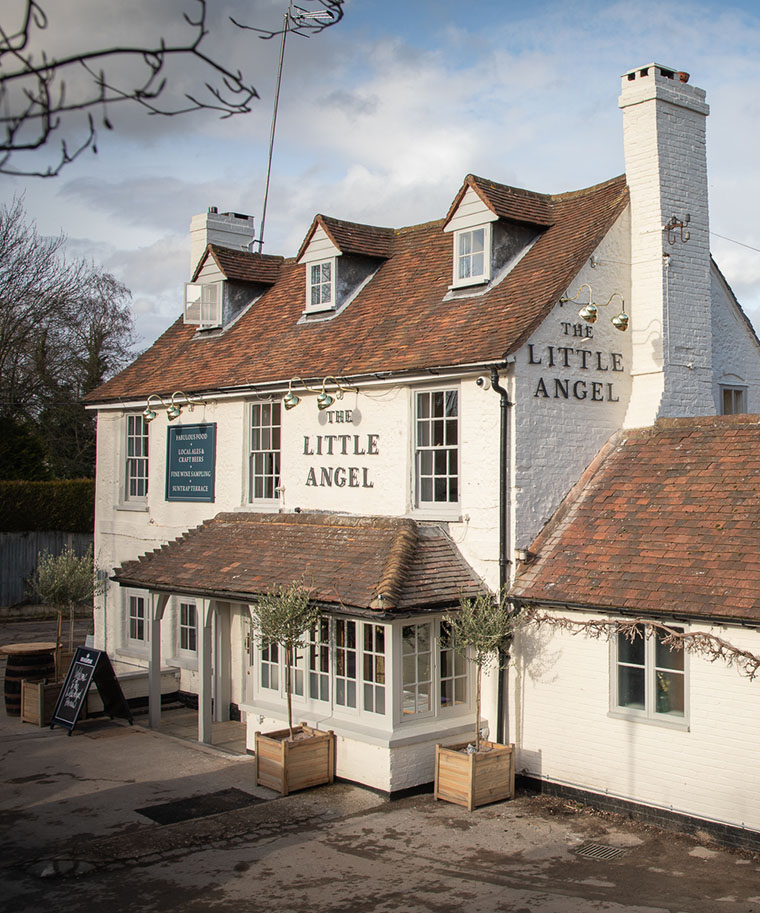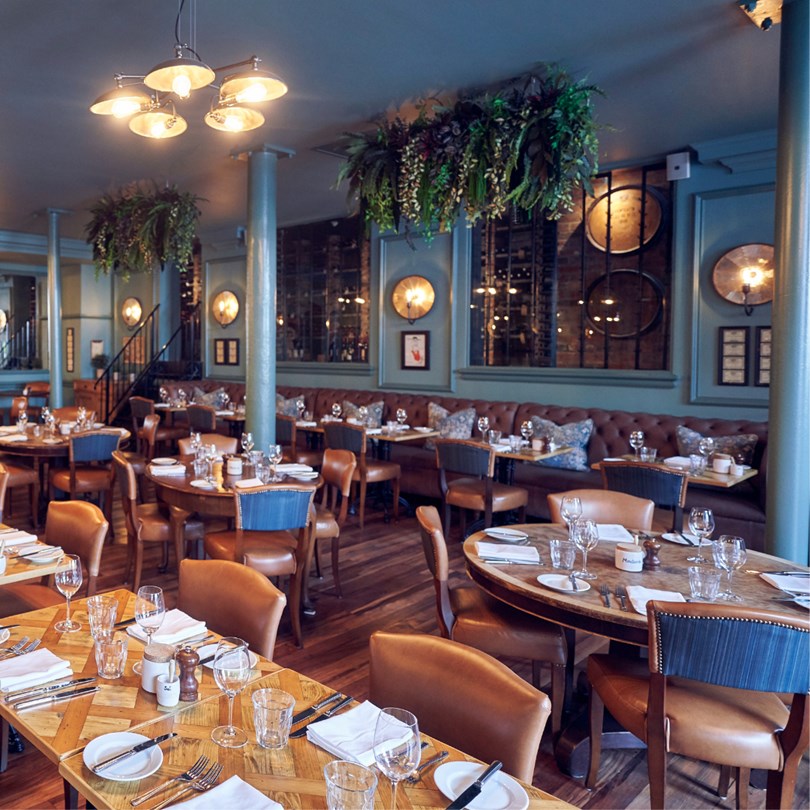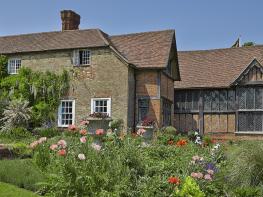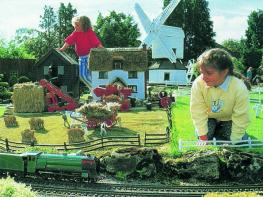Set in 65 acres of elevated grounds just 45 minutes from central London and 30 minutes from…
Hambleden and the Chiltern Way

6 miles (9.7kms)
About the walk
The centre of this beautiful little village, happily bypassed by traffic, features picture-postcard, flint-faced terraced cottages, and a quaint trough and water pump. It is in the care of a private estate and under the protection of The National Trust, so little happens here without very careful consideration, and there have been few changes over the last century. A prime example is the old iron water pump in the centre, which until 1956 provided the village’s main water supply. In 2013 Hambleden was ranked one of the 30 Best Villages in Britain by The Times.
It's all about the location
Because it is so little altered, like neighbouring Turville, picturesque Hambleden is a favourite location for film and television crews. Major films shot here include Chitty Chitty Bang Bang, The Witches, Dance with a Stranger, The Avengers (1998 version), 101 Dalmatians and Sleepy Hollow. Many episodes – including the very first – of Midsomer Murders were filmed here, while in Band of Brothers Hambleden was Easy Company's training base in England.
Famous names
The village boasts two famous residents. The first was a man associated with the loss of even more lives than the many fictional demises that have been depicted here. He was Major General James Thomas Brudenell, born at the Manor House in 1797. Better known as Lord Cardigan, he led the ill-fated Charge of the Light Brigade in 1854, resulting in 156 men dead or missing, a further 127 wounded and 60 taken prisoner.
Despite the fact that he bravely led the charge from the front, Lord Cardigan survived the carnage, and in the aftermath the extent to which he was to blame is unproven. Whatever the truth of the matter, he was a man of considerable style – the model for the anti-hero in the Flashman novels – and coolness; it is said that after reaching the Russian guns and having taken part in the fighting, he rode back up 'the valley of death', saw that nothing more could be done that day, and so retired to his yacht in Balaclava harbour and took dinner with champagne.
Less dramatically, William Henry Smith (1792–1865) lived in the village. He built his family company into Britain’s leading newsagent, named from his initials, W H Smith. You can find a memorial to him in the churchyard.
Walk directions
Before setting off, spend a little time looking around the tiny centre of the village. Walk back towards the car park, turn left opposite the pub and continue along the main road, after a few paces passing the grand Manor House of 1603. Turn right up a lane to Hutton’s Farm, and continue straight ahead past an intercom point with rising bollards. Follow it up and up, through the trees, ignoring all turns off here, until you reach the entrance to Hutton’s Farm, to your right.
Turn left, enjoying the panoramic views, and go through a gate beside a fenced-off field. Follow the dirt track into woodland. Keep left at a waymarked fork, cross a track and continue ahead on the path. Cross a stile and keep right at the road.
You are now at Rockwell End, with little to distinguish it in the way of landmarks (though episodes of Midsomer Murders have been shot here). Continue to follow the road round to the left. This is a long stretch of road walking, but traffic is generally very light. After around 0.75 miles (1.2km) you will see a large house, St Katharine’s Parmoor. Continue a few paces beyond here and turn left, following the lane, which is tarmac as far as a house with balcony. It dwindles to a path at this point and descends gradually between trees and bushes with fine views between hedges to the left. Pass a path running off sharp right, and then another, before descending between hedges to the road.
Turn left, then take the next waymarker left onto the Chiltern Way footpath. This cuts straight ahead across fields for around 1 mile (1.6km). Cross a lane and keep to the left of the house, following the path through the trees. Keep alongside a hedge, heading towards houses. Cross the field and continue on a track. Go straight on at the road, passing Colstrope Farm on the left. Look for a kissing gate on the right-hand bend.
Continue ahead to a kissing gate and keep the field-edge on your right. Head for a kissing gate and continue, with the field-edge now on your left. Make for Pheasant’s Hill through two kissing gates. Cross a drive to a further kissing gate and continue beside a paddock. Pass through two kissing gates, either side of a conifer belt, and cross the next field with a fence on your right. Go through a kissing gate and veer left to another. As Hambleden Church draws close, cross the last field diagonally right to emerge by a small bridge. Follow the road back into the village to return to the car park, passing a clear, babbling stream to your right.
Additional information
Field and woodland paths, some road walking
Rolling Chiltern countryside, farmland and woodland
Lead required across farmland
AA Walker's Map 24 The Chilterns
Public car park behind the Stag and Huntsman (signposted)
None on route
WALKING IN SAFETY
Read our tips to look after yourself and the environment when following this walk.
Find out more
Also in the area
About the area
Discover Buckinghamshire
Buckinghamshire is a land of glorious beech trees, wide views and imposing country houses. Victorian Prime Minister Benjamin Disraeli savoured the peace and tranquillity of Hughenden Manor, while generations of statesmen have entertained world leaders at Chequers, the Prime Minister’s rural retreat. Stowe and Waddesdon Manor are fine examples of even grander houses, set amid sumptuous gardens and dignified parkland.
The Vale of Aylesbury is a vast playground for leisure seekers with around 1,000 miles (1,609km) of paths and tracks to explore. Rising above it are the Chiltern Hills, a designated Area of Outstanding Natural Beauty covering 308sq miles (798sq km). They are best appreciated in autumn, when the leaves turn from dark green to deep brown. In the southeast corner of the Chilterns lie the woodland rides of Burnham Beeches, another haven for ramblers and wildlife lovers. Although the county’s history is long and eventful, it’s also associated with events within living memory. At Bletchley Park, more than 10,000 people worked in complete secrecy to try and bring a swift conclusion to World War II. Further south, an otherwise unremarkable stretch of railway line was made infamous by the Great Train Robbery in the summer of 1963.
Nearby stays
Restaurants and Pubs
Nearby experiences
Recommended things to do
Why choose Rated Trips?
Your trusted guide to rated places across the UK
The best coverage
Discover more than 15,000 professionally rated places to stay, eat and visit from across the UK and Ireland.
Quality assured
Choose a place to stay safe in the knowledge that it has been expertly assessed by trained assessors.
Plan your next trip
Search by location or the type of place you're visiting to find your next ideal holiday experience.
Travel inspiration
Read our articles, city guides and recommended things to do for inspiration. We're here to help you explore the UK.













